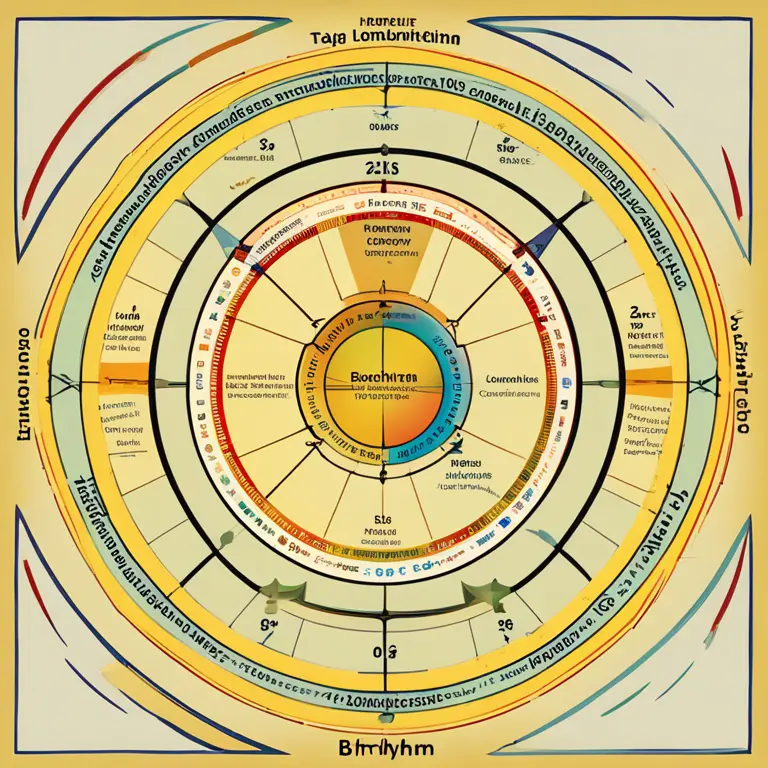
The Rhythms within: Insights into Biorhythms
Delve into the fascinating world of biorhythms with examples illustrating how they might reflect our physical, emotional, and intellectual states.
article by Adrian Wallace
Introduction to Biorhythms
Biorhythms are a compelling concept that suggests our daily lives are influenced by innate cycles. These cycles are thought to impact our physical, emotional, and intellectual abilities. The theory of biorhythms dates back to the 19th century, and although it isn't backed by scientific evidence, many individuals find value in monitoring these cycles. Biorhythms are split into three main categories: the Physical (23-day cycle), Emotional (28-day cycle), and Intellectual (33-day cycle), each influencing different aspects of our well-being. By charting these biorhythms, some believe it is possible to predict and understand fluctuations in human behavior and performance.

Physical Biorhythm
Imagine you're training for a marathon. You might notice that on some days, your energy levels are through the roof, while on others, you struggle to complete your usual distances. This could be an example of your Physical biorhythm at play. On days when this cycle is at a high point, you're likely to feel stronger and more vigorous. Conversely, when the cycle dips, your endurance and physical capacity may decrease. This biorhythm is thought to affect coordination, stamina, and overall physical condition, potentially offering a guide to the best days for physical activities.

Emotional Biorhythm
Our feelings can seem like a roller coaster ride, but biorhythm theory implies that this could be partly due to our Emotional cycle. For instance, you might find a period of sensitivity and heightened emotional responses, possibly leading to strong interpersonal connections or heightened artistic inspiration. During a low phase, you could experience a sense of detachment or less empathy. For someone who tracks their Emotional biorhythm, awareness of these patterns could help in planning important social interactions or creative endeavors.

Intellectual Biorhythm
Our cognitive processes also have their ebbs and flows, according to biorhythm theory. When the Intellectual biorhythm peaks, you may find it easier to solve complex problems, absorb new information, or develop innovative ideas. Conversely, during a downward phase, you might notice a sluggishness in learning or a decreased capacity for logical thinking. A student, for example, could use this knowledge to schedule studying for exams or tackling challenging projects during high points of their Intellectual cycle.

Combining Biorhythms
Life isn't influenced by just one factor at a time, and that's true for biorhythms as well. A day when your Physical and Emotional cycles are high but your Intellectual cycle is low might see you excelling in a sports competition yet feeling frustrated with difficult cognitive tasks. Similarly, an alignment of the high Intellectual and low Physical cycles may not be the best time for physical exertion, but perfect for academic pursuits. Being aware of the interplay between different biorhythms can provide a more holistic view of the potential impacts on your daily life.
Using Biorhythms in Everyday Life
Though not scientifically proven, biorhythms can be employed as a self-help tool. By mapping out your biorhythms, you may be able to make informed decisions about when to engage in certain activities. For example, choosing to negotiate a contract when your Emotional and Intellectual cycles are up, or maybe scheduling surgery when your Physical biorhythm indicates greater resilience. The idea isn't to rigidly control your life but to provide additional insights that may help you exploit your natural rhythms to your advantage.
Looking Ahead: Biorhythms in 2024
As we make our way into 2024 and beyond, the interest in personal well-being and self-improvement continues to flourish. People are turning to tools like biorhythms to navigate their lives with more awareness. Armed with apps and digital charts that make tracking these cycles simpler than ever, users engage with this concept to potentially enhance their productivity, health, and relationships. Whether or not biorhythms hold the key to better understanding ourselves is up for personal interpretation, but the journey of self-exploration it encourages is undeniably valuable.
Published: 1/30/2024
Modified: 1/30/2024
More predictions
Come back here soon to learn more about yourself and your future


The Rhythms of Life: Delving into Human Biorhythms
Discover the fascinating world of human biorhythms and how they influence our daily lives, health, and well-being.


The Rhythms of You: A Guide to Biorhythm Theory
Discover the foundations of biorhythm theory and how it purports to map the cycles of physical, emotional, and intellectual energy in our lives.


The Essentials of Biorhythms
Discover the basics of biorhythms, the cycles influencing your physical, emotional, and intellectual states, and what they mean for personal well-being.